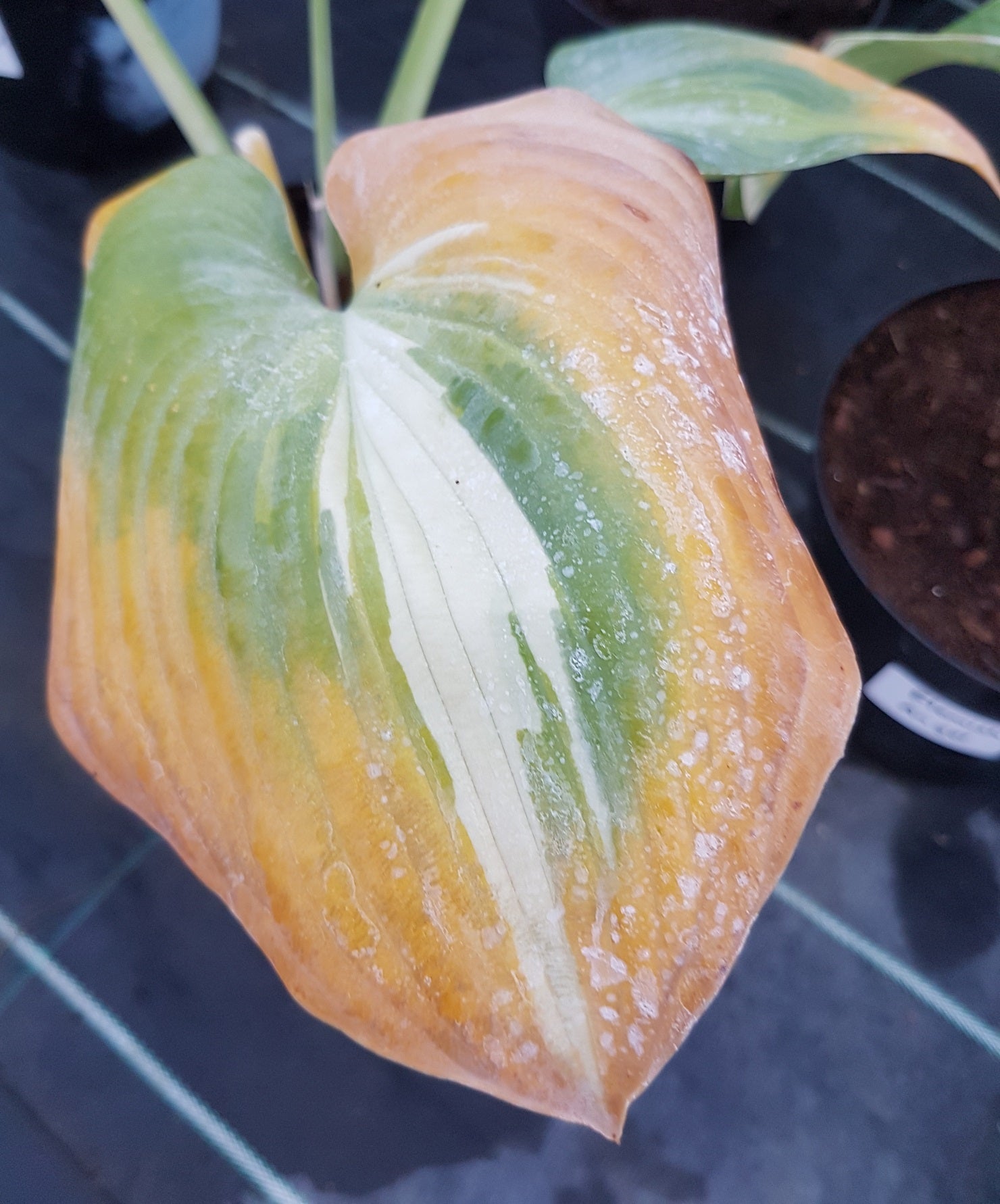
Autumn can be a odd time for hosta lovers, seeing your favourite plants starting their decline into dormancy knowing it will be a long 5 months until you see them again. It is however a very good time to start thinking about next year and how you can make your hostas look even better.
What will happen to my hostas in Autumn?
Towards the end of Summer and beginning of Autumn hostas start to look a little run down, brown marks start to appear on the edges of the leaves and colours start to fade. Many blue varieties turn green over this period and can often look like completely different varieties themselves. All of these things are completely normal and are all part of the winter shut down process.
As the nights draw in and the temperature drops, you will notice the leaves will turn yellow. Many people who are new to hostas may think there is something wrong, but this is completely normal.

(Above, Hosta 'Flemish Master' at the end of September)
What do I do with my hostas over Winter?
By Winter, hostas will have entered their dormancy stage and the leaves will have completely died back. You don't need to do anything with your hostas over Winter, they are completely hardy and do not need bringing inside or frost protecting. Young plants may benefit from being moved somewhere dry, this will help them avoid getting over wet.
We would recommend to clear the dead leaves off in late Winter, this way the leaves come away cleanly and you are not left with tough strands. There are a couple of reasons why cleaning the top of your plants off is beneficial. One reason is that slugs will sometimes lay their eggs in the shelter of the dead leaves in Autumn. By removing the leaves, you can also remove the eggs and young slugs at the same time helping to avoid early season slug damage when your hostas appear. This also makes it easier for birds to eat any slugs or eggs that have been laid in or around your plants. Another reason for doing this, is that fungal diseases that can be prevalent at the end of the season if it has been wet and warm can over winter in the dead leaves, this can then affect new growth that appears in the spring.
Slug Protection
Whatever slug protection you choose to use, timing is important. Of course it can vary depending on the method of protection that you do go with. Generally, protection should be in place before the new shoots appear in March. We would recommend starting to think about this in mid February. If your hostas are not protected early, once the slugs are in it is a much harder job to control them and this usually has to be done by hand. For pots Copper Tape and Crushed Seashells work well.
When do you feed hostas?
Hostas can be fed at anytime in the Spring, but we tend to do this just before they emerge in March. Top dress feeds such as Fish, Blood and Bone or High Nitrogen Feeds are ideal. If you do not feed your hostas this would not be a problem, they are strong plants that can look great without any help. If you are planting new hostas, then we would recommend using a Slow Release Feed.
Help
I have never seen so many slugs in January how can I stop these monsters? I am really concerned how they will destroy my collection of Hostas.
In October I planted a new and small hosta in the enormous and immovable pot (part of an old kitchen copper), which had housed my mother’s beautiful hosta for many years.
With all this rain, should I cover it or remove it from the ‘copper’ temporarily?
Thank you
I read sand box sand or fine sand in general placed on and around the hostas. I just did this procedure, so time will tell, it makes sense because the slugs are slimy and the sand adhere to their bodies. I will keep you posted🐾
Cal hostess survive in Utah’s mountains? Our cabin is 8,000 feet? Thank you!
Can’t find an answer to why my blue hosta has come up green! It is extremely healthy and vigorous, and like my several hosts grows in a wet shaded area. All the various hosts look extremely healthy. Could the rather extreme winter frosts this year -13 for 24 hours, have made a difference? It is still lovely but not as striking being green like several others!
Thanks for all your informative updates on hostas I am so relieved I saw the changes in the Autumn through to Winter and panicked. I look forward to seeing the again. I will look after them regarding slugs.
Lesley Edmondson
October 07, 2025
Hi, love your information on hostas, I have 2 beauties which have been in their pots for 9 years
Any advice on when and how to repot/ divide would be greatly appreciated, thanks.